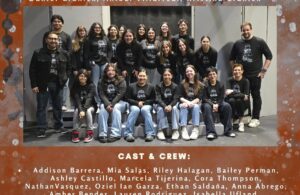- South Texas Students Meet Accordion Music Icons Los Tigres Del Norte In Edinburg Thanks To Khs America/Hohner Alianza Académica Initiative
- Fragile Planet Offers a Nighttime Wildlife Experience
- Falcons Soccer Off & Running
- Cameron County Receives Funds to Improve Two Parks
- Falcons Complete First Half of 32-6A
- School District to Help out Victims of California Wildfires
- Sand Castle Days Continued Despite Unexpected Weather
- Ready for District
- Discussion of Garbage Dumpster Rates, Agreements Between State & City on Highway Regulations, and More
- 31st Annual Shrimp Cook-Off is Right Around the Corner
UTRGV’s Erin Easton Participates In Historic Antarctic Research Expedition
- Updated: April 24, 2025
Professor explores deep-sea life under Antarctic ice, inspiring next generation of researchers
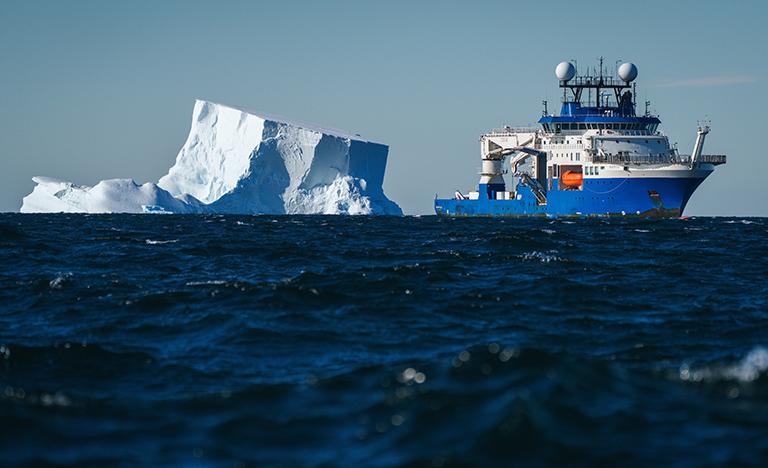
By Amanda A. Taylor-Uchoa
RIO GRANDE VALLEY, TEXAS – APRIL 8, 2025 – Dr. Erin Easton, an assistant professor in the UTRGV School of Earth, Environmental and Marine Sciences, recently returned from another groundbreaking research expedition, this time off the coast of Antarctica in the Bellingshausen Sea.
Easton, who made international headlines last year for helping discover more than 200 never-before-observed species off the coast of Chile, returned as co-principal investigator aboard Schmidt Ocean Institute’s R/V Falkor (too) for this latest Antarctic expedition.
Braving sub-zero temperatures and icy seas, Easton and an international team of scientists became the first to explore a newly exposed seafloor that had been covered by ice for centuries until the calving of iceberg A-84. Calving is the process where chunks of ice break off from a glacier or ice shelf and fall into the ocean or another body of water.
On Jan. 13, 2025, iceberg A-84 – with an area the size of Chicago – broke away from the George VI Ice Shelf, revealing an area of the seafloor that had never been observed by humans. The research team quickly pivoted their expedition plan to investigate the site, arriving just 12 days after the event.
“Once we were made aware of the calving event, the team discussed the possibility of shifting our focus to this newly exposed area. We unanimously decided to do so, which meant throwing out the original plan and developing a new strategy in real time,” Easton said.
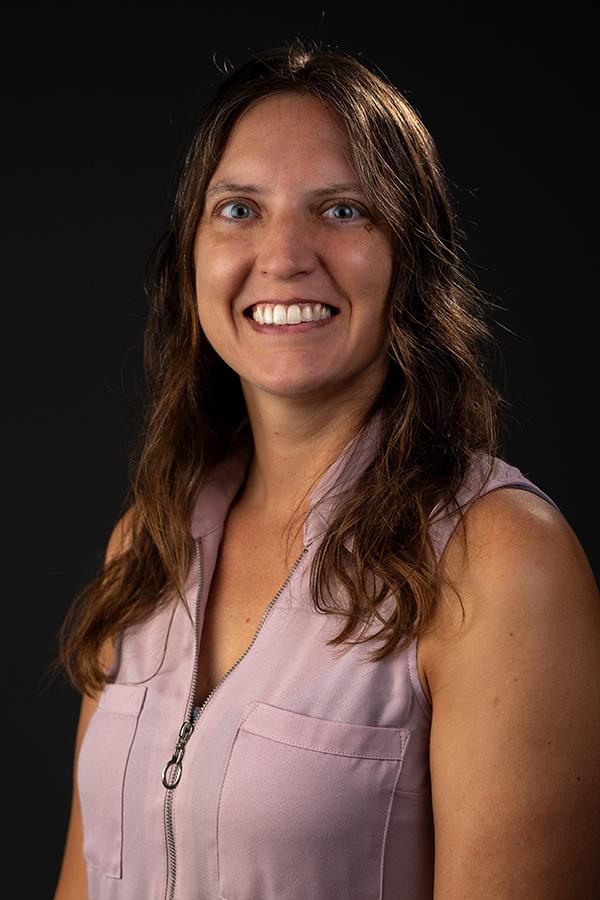
EXPLORING THE UNKNOWN
This mission marked the first detailed interdisciplinary study of the geology, oceanography and biology beneath a newly exposed section of the Antarctic ice sheet. Using remotely operated vehicle (ROV) SuBastian, the team conducted eight days of deep-sea observations, discovering a thriving ecosystem at depths of up to 1,300 meters.
“As far as we know, we are the first to arrive so soon after a large calving event to explore a seafloor that has had its surface waters covered in ice essentially since the last interglacial period,” Easton said.
Despite expectations that life would be sparse in this previously ice-covered environment, the team found an abundance of corals, sponges, icefish, sea spiders, and even octopuses, suggesting that this ecosystem had been sustained by ocean currents transporting nutrients beneath the ice shelf for an extended period.
“I was not surprised to find life under the ice shelf, as we know these ecosystems are supported by the circulation and productivity of adjacent waters. However, seeing a well-established, thriving ecosystem on exposed rock was remarkably beautiful,” Easton said.
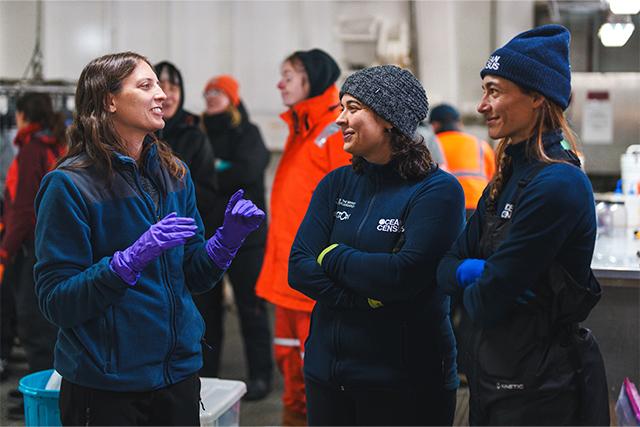
A GLOBAL EFFORT TO UNDERSTAND CLIMATE CHANGE
The research provides crucial insights into how Antarctic ecosystems function and how they may be impacted by climate change. With the Antarctic ice sheet rapidly losing mass, the data collected during this expedition will help scientists predict future environmental shifts.
“This research will provide valuable information to understand climate effects and interactions around Antarctica, that in turn, have broader impacts on global ocean circulation and climate patterns,” Easton explained.
In addition to biological discoveries, the team also collected geological samples and deployed autonomous underwater gliders to study how glacial meltwater alters ocean conditions. The expedition was part of Challenger 150, a global deep-sea research initiative endorsed by UNESCO’s Intergovernmental Oceanographic Commission.
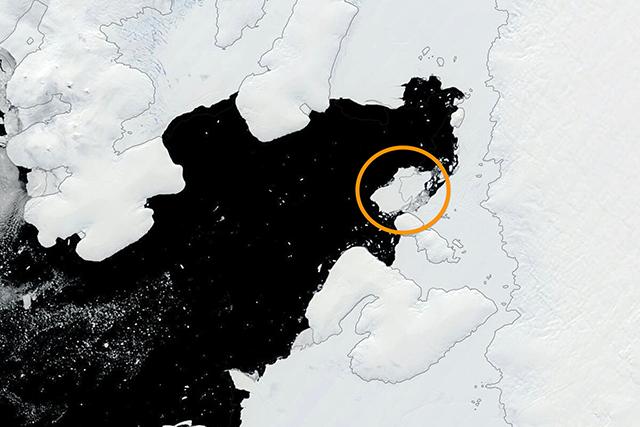
CUTTING-EDGE TECHNOLOGY AND INTERNATIONAL COLLABORATION
The success of the expedition was made possible through advanced technology and international collaboration. ROV SuBastian enabled high-resolution imaging and sample collection from extreme depths, while satellite tracking allowed scientists to monitor the movement of icebergs in real time.
“Collaboration always enhances research. By bringing together experts from different fields, we were able to conduct a more comprehensive study of the ecosystem and the factors that shape it,” Easton said.
For Easton, witnessing the vast Antarctic landscape firsthand was one of the most memorable aspects of the expedition.
“The sheer immensity of the icebergs and the ice shelf was absolutely breathtaking,” she said.
Looking ahead, Easton plans to conduct genetic and morphological analyses on the coral specimens collected, integrating her findings with the broader research team’s data. She also hopes to pursue future research exploring how these newly uncovered ecosystems evolve over time.
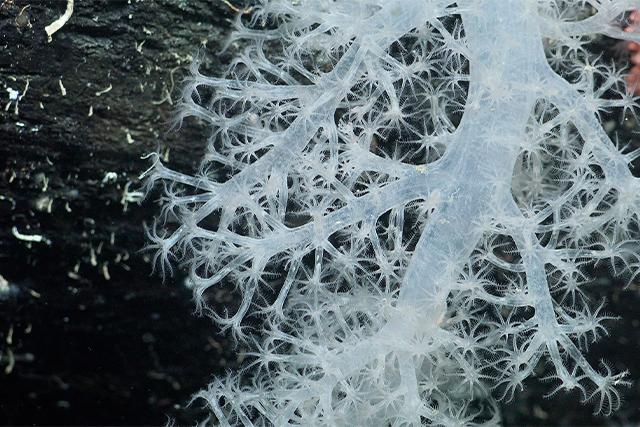
INSPIRING UTRGV STUDENTS
Easton encourages UTRGV students to explore research opportunities and consider careers in marine science.
“This experience reinforces the importance of deep-sea research in helping us better understand our oceans and the impact they have on our lives. For students interested in marine biology, oceanography, or climate science, there are so many exciting opportunities to get involved – both at UTRGV and beyond,” she said.
Two UTRGV students, Elyssia Gonzalez, a grad student pursuing a master’s degree in Ocean, Coast and Earth Sciences, and Megan Francis, a sophomore pursuing a Bachelor of Science in Marine Biology, had the opportunity to participate in Easton’s previous expeditions off the coast of Chile.
For students interested in research, Easton recommends seeking out opportunities through UTRGV’s School of Earth, Environmental, and Marine Sciences, as well as looking for internships and fieldwork experiences.
“The best way to get involved is to be curious, ask questions, and take advantage of opportunities to participate in hands-on research,” she said.
The discoveries from this expedition are just the beginning, as researchers continue to analyze the data collected. Their findings will help shape future studies on the impact of climate change on Antarctic ecosystems and beyond.
ABOUT SCHMIDT OCEAN INSTITUTE
Schmidt Ocean Institute was established in 2009 by philanthropists Eric and Wendy Schmidt to catalyze the discoveries needed to understand our ocean, sustain life, and ensure the health of our planet. Schmidt Ocean Institute pursues impactful scientific research and intelligent observation, technological advancement, open sharing of information, and public engagement at the highest levels of international excellence. For more information, visit www.schmidtocean.org.



